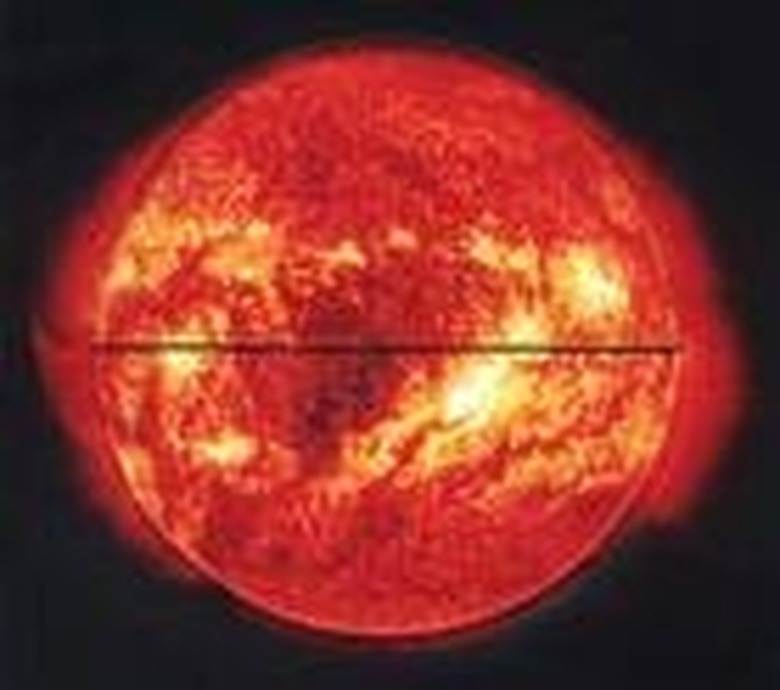Unique Facts About The Sun
When we look at the stars in the night sky, it is difficult to imagine that our blazing sun is also a star. It is the star nearest to the Earth. Although the sun is close to the Earth in cosmic terms, it is still 93 million miles away.
Size and Age
Size and Age
The sun is 109 times wider than the Earth and 330,000 times heavier. The sun formed approximately 4.5 billion years ago and will burn for an estimated 5 billion years more, so the sun is at the mid-point of its lifespan.
Composition and Structure
Composition and Structure
The sun is completely gaseous. There is no solid surface. The sun is composed of 74 percent hydrogen, 25 percent helium and 1 percent other gases. The sun is composed of several layers. The sun's surface is made up of thick gases and is referred to as the photosphere. Two layers of atmosphere, called the chromosphere and the corona, cover the photosphere. The corona is the outermost layer of the sun. Beneath the photosphere lies three hot layers called the core, the radiative zone and the convective zone. Gravity holds the sun together.
Temperature
Temperature
The temperature at the photosphere is approximately 10,000 degrees F. The estimated temperature at the sun's core is 27 million degrees F. The sun burns more than 7 million tons of natural gas every second. Without the light and heat from the sun, the Earth would be unable to support life.
Rotation
Rotation
The sun rotates on its axis approximately every 26 days. Since the sun is composed of gas, different parts rotate at different speeds. The fastest rotation occurs at the sun's equator. The slowest area of rotation is at the sun's polar region which occurs once in more than 30 days.
Sunspots
Sunspots
Sunspots are dark regions that appear on the sun. They are areas of magnetic activity caused by the sun's magnetic field. The temperature in sunspot regions is much colder than surrounding areas. Sunspots usually last for several days although larger ones may last for weeks.
Solar Flares
Solar Flares
A solar flare is an electrical discharge through the upper portion of the solar atmosphere. Electromagnetic energy is released in intense bursts. The disruptions of the sun's atmosphere eject solar material, creating an unusual display of solar activity. Solar flares can cause geomagnetic storms on the Earth, disrupting communication satellites and power grids.
Cite This Article
MLA
Zagata, Darlene. "Unique Facts About The Sun" sciencing.com, https://www.sciencing.com/unique-sun-5348711/. 24 April 2017.
APA
Zagata, Darlene. (2017, April 24). Unique Facts About The Sun. sciencing.com. Retrieved from https://www.sciencing.com/unique-sun-5348711/
Chicago
Zagata, Darlene. Unique Facts About The Sun last modified March 24, 2022. https://www.sciencing.com/unique-sun-5348711/
